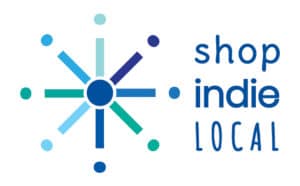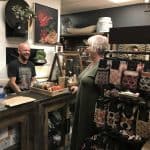Intro
Online marketing feels like a moving target. Just as soon as you get a website, the experts say you need a blog. Then it’s pay-per-click ads, then it’s something else. How are you supposed to keep up with this? That feeling of being always behind is why I want to simplify online marketing. To fit in with my Simplified Business Plan and Simplified Marketing Plan, let’s break it down into a Simplified Online Marketing Plan, and explore the tools you can use to market your business.
Here’s the number one principle to simplify your online marketing. Focus on having an active online presence where customers can find you, and then engage your customers in conversations online. We are going to talk about websites, alternatives to websites, and many more tools that help your business be “present” online.
Having an active online presence is 90% of online marketing
A website is just one type of presence. Are the alternatives to having your own website any good at reaching customers? Yes! Either a blog or a site profile may better fit your business than a traditional website.
Blog
A blog is just a special website made up of stories or articles, kind of like a newsletter. It also gives customers and readers a chance to comment on stories, building conversations. Special services like Blogger and WordPress offer a platform for your own blog. The platform includes all the behind the scenes software that does the work. That lets you focus on writing stories, which works about like writing an email. Feeling brave? A blog can also be made up of audio or video clips, not just text.
This is what I use for my liquor store’s website. It provides all the basic contact info, plus I can update with new product announcements, articles about wines, and drink recipes. You probably already teach customers about your product every day, so you could easily add that info to a blog and share it with your new potential customers.
Site Profile
If you fill in your business information, you can let your user profile on services like JumpUp or LinkedIn serve as a website. They are designed for business, so these profiles give you room to include your contact information such as phone and email, details about your line of business, even hours or directions. You want customers to find your profile, so also check the privacy settings to make your profile public. Don’t worry about people mis-using your email or phone number. The truth is that it rarely happens. If you feel more comfortable, use a secondary phone number and email address.
Important Tips
To make sure that customers searching for you can find you, include the right keywords in all your online presence. Your keywords are your name, your business name, your line of work or brands you carry, and your hometown or service area. Think of the words a customer would be thinking right before they search for a business or solution like yours.
Post and share information your customers want. Don’t emphasize your business, when you could freely share tips, how-to’s and other stuff relevant to your line of work. Avoid the sales pitch. If you make a mistake and offend someone, say you are sorry. This is just good human relations.
You can do much more than a website!
Right now, lots of your potential and current customers are online, but they aren’t hanging out at your site. Going beyond a website means reaching those potential customers where they already are online. You want to go where they go and build your presence there. Then you can engage them in conversations. Meaningful conversations are the goal.
How do you find out what sites they use? Ask them! Ask about their interests related to your line of business, like maybe photography or cooking.
If they like to post photos, they may be at Flickr. Ask them. Then you can investigate those tools to decide which help you reach them and fit best for your business.
In order to do this, you will need to budget time daily or at least weekly to build your presence. The good news is that you can have some help. Right now, you have loyal customers who would gladly promote your business, link to you, write positive reviews and generally drive some awareness and traffic to you. All you have to do is ask them.
Online Presence tools:
Lots of different tools exist to build a presence online and more are created everyday. How do you keep up? By understanding the basic types of tools, and by picking only those that fit best with your business and customers.
- Local listings: Most search engines maintain a local section with business listings. Most of those will allow you to fill in your business info, including hours, directions, etc. These are easy to get set up. Local review sites like Yelp are a bit different. They allow or encourage people to review your business. Make sure you give them updated info on your business, but don’t be tempted to do your own review! A smarter tactic is to encourage your loyalists to review you.
- Websites: When you create your own website, it’s your job to keep it up to date and interesting. Customers now expect you to have some interactivity built in. Can you let customers upload stories, reviews, suggestions, photos? Can they interact with other users? Can they email you? Comment on your articles? Offer tips of their own? Tools exist for all of these, so choose at least a few to use.
- Blogs: Blogs are like an online newsletter made into a conversation. They can be stand alone or part of your website. They can also be you on your own or part of a regional or topical group blog. (Here’s a bit more on blogs, from the top of this article.)
- Guides: These tools offer many different resources around a particular topic. Some will let you set up your own guide, like Squidoo‘s lenses. Some have existing guides that you can submit your info to, like About and the thousands of directory sites.
- Article submission sites: Sites like Ezine Articles and Go Articles allow you to distribute your articles to many different websites, for a link or even a small payment.
- Audio: On your own site, you can use audio to introduce yourself, teach about your products, share a story or testimonial, or lead an audio tour. By using a service like BlogTalkRadio, you can record audio just by phoning it in. You can also record with a simple microphone on your computer and post it to your own blog or web site.
- Video: Video is a terrific story teller! Ignore all the goofy stuff, and you can find wonderful videos on YouTube, Google Videos, AOL Video and the others produced by small businesses. You can demonstrate a product, share a passion, show solutions to problems, and share testimonials. If you want to get away from all the weird videos, use a service like Blip.tv to embed the video onto your own blog or website.
- Photos: Lots of businesses have great photo opportunities. Are your customers using Flickr and other sites right now to share photos? Start a group to let them come together. Upload your own pics. Encourage group interaction.
- Social Media Sites: MySpace, FaceBook, Twitter, and their many relatives give you a chance to build networks of interested folks, mostly for social non-commercial interaction. Why bother with “non-commercial” communication? Because it is the conversation and interaction that build relationships much deeper than any ad campaign.
- Ecommerce: If you want sell products online, you enter a whole new realm of tools and learning. A few simple tools that can integrate into your small business website are affiliate programs like Chitika eMiniMalls and Amazon, or ads like Text Link Ads and AdSense. Another service, Fulfillment by Amazon, lets you sell products but have Amazon manage the warehousing and fulfillment.
- Forums: You probably have visited online forums or bulletin boards. You name a topic, and there are forums on it. You can establish an active presence on existing forums or you can even start your own, if you want to build a community around yourself. It’s a lot of work to maintain a good forum, but it can pay off in lively relationships.
- Text/SMS: While not strictly an online tool, text message or mobile marketing is still an effective one. Services like Mobivity let you set up opt-in marketing to customers’ cell phones for contests, prizes, coupons, or any other info. “Text for more info” is appearing on real estate signs through services like CellAHouse, or even on Tshirts via Reactee.
Doing ‘real’ online marketing is only 10%
Other than building your presence online, you can invest up to 10% of your online marketing time on some additional “behind the scenes” tools.
Online Advertising
You can buy ads on many different sites that reach your target market by going directly to the site owner or manager. If you’d rather reach more than one site at at time, consider these advertising network tools.
- Pay-per-click ads: With these ads, you pay each time someone clicks on your ad. Most search engines offer ads next to search results, like Google AdSense, Yahoo! Search Marketing, or MSN adCenter.You decide how much you are willing to pay to appear next to searches for your keywords, and you can limit your total to spend. If you want quick exposure, this may be a good tool for you.
- Text ads: Various companies, including Text Link Ads, will help you purchase a simple text link on many different sites. The costs are generally based on the number of days and the quality of the site, rather than on the number of clicks on your ad. If you don’t like big flashy graphic ads, text ads may fit your style best.
- Affiliate ads: Networks like Linkshare and Commission Junction make it possible for you to pay based on an action, like a completed sale, rather than on a click. So if a website refers a customer to your site, and that customer buys something, then you pay the affiliate commission. This tool may suit you best if you don’t want to pay for people who click on your ad, but don’t buy.
Search Engine Optimization
Because being found in search results is so important to reaching potential customers, many people focus their entire effort on changing every possible detail that can optimize their site for the search engines. From the vast field of search engine optimization, we’re going to discuss two easy-to-use tools: keywords and links. You want to include the words your customers will use when they search, and you want to use them prominently, in titles, headings, and throughout the text on your site. That should be easy; it’s what your site is about! What can make it seem tough is that some words are so obvious that they are only implied, not stated very often, like your town name, state or brand names. You have to make certain you’ve included them more than once. Links from relevant websites help potential customers to find you. Search engines consider these incoming links as an important sign of popularity. So look for chances to build links from interesting, relevant sites. One successful tactic is to guest author an article on the other site, in exchange for an incoming link.
Conclusion
The simplified approach to online marketing is to select a few tools that fit your business and your customers, build your online presence, and develop relationships with current and potential customers through conversation. Contribute useful information to the online communities. Like the best in-person networking, online relationships will connect you to new business opportunities. Don’t try to do it all. What will customers think when they find that you have dozens of profiles, but they are mostly inactive and un-updated? Better to focus on just a few tools and use them well.
New to SmallBizSurvival.com? Take the Guided Tour. Like what you see? Get our updates. Want more stories? Read our shared stories from all over.











Great post, Becky! Very clear and informative – thank you!
Becky,
Thanks for the straightforward overview!
Mike
Every business, no matter how small, should have some sort of online presence. Great overview!
Hi Becky
Thanks for sharing all this great information, it’s been really interesting to read and very helpful. I found your site through a link on TDC and will be popping by again to keep up to date with your tips.
Have a great w/end and thanks again
Tamsin